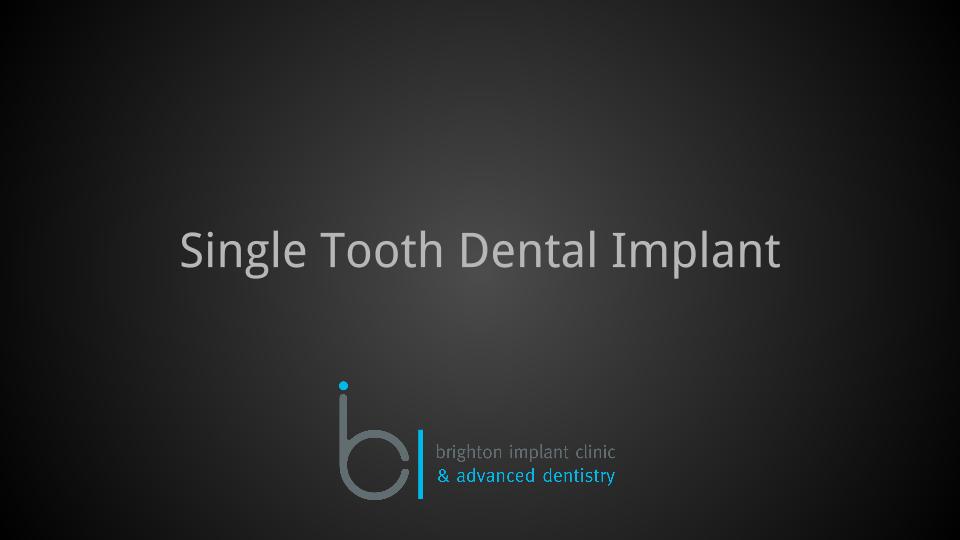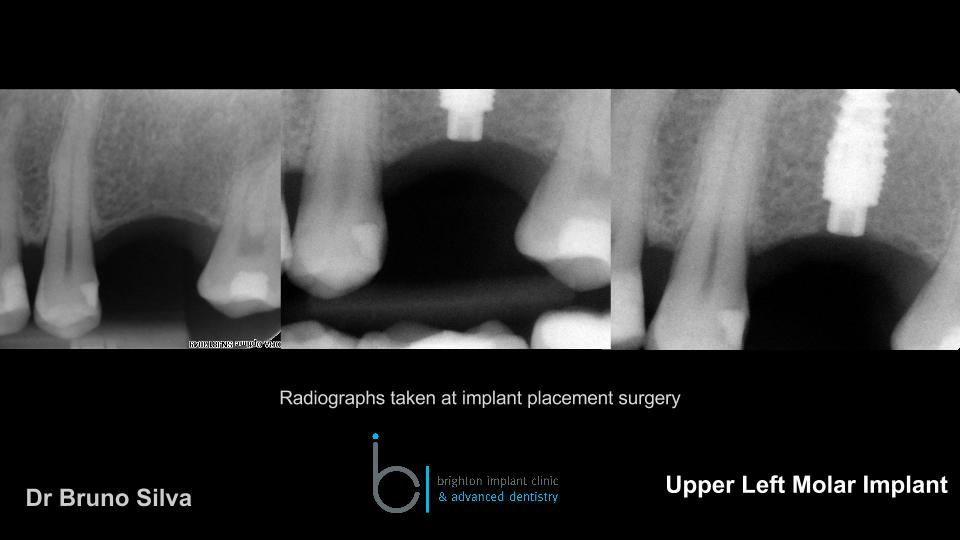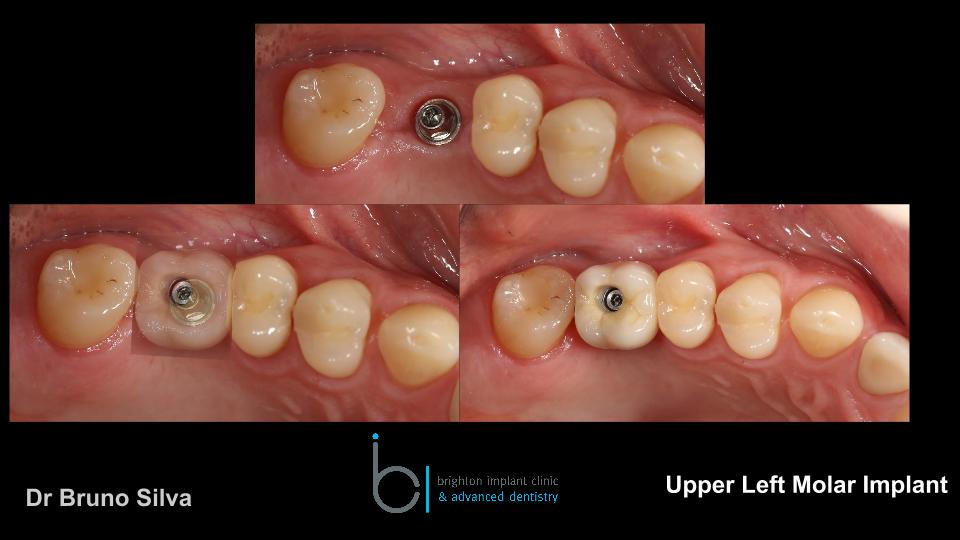A patient came to our clinic and requested some advice and treatment to replace a missing upper left molar tooth. The tooth had been extracted 4 months before because of a failed root canal treatment. Root canal treatments are commonly carried out on natural teeth which are affected by decay, trauma or previous dental treatment. If the nerve and blood supply (tooth pulp) is affected by tooth decay or damaged irreversibly then a root canal treatment is required to ‘save’ the tooth. A root canal treatment aims to remove the affected/infected tooth pulp and restore the tooth back to function. The treatment itself can be complex on multi rooted teeth which may have 3, 4 or 5 nerve canals. Each of the nerve canals are very small and often require magnification to be seen properly. Dentists use special loupes or dental microscopes to help view each of the canals. Failure to treat or clean one of the canals will cause the root treatment to fail over the long term.













If a root canal treated tooth becomes infected again after the treatment then it may require extraction. The case which we discuss today was such a case where the tooth was removed after a failed root canal treatment. After the extraction the area was left to heal for a period of 4 months. During this time the bone and gum tissues healed nicely and new bone formed in the area. The patient wanted to replace the missing tooth with a fixed natural looking, comfortable and functional tooth. We explained to the patient all of the options available to replace a single missing molar tooth. The options available are:
- No treatment, leaving the space as it is. Long term the adjacent teeth and the opposing tooth may drift into the space and cause further problems with food impaction between the teeth. The remaining teeth are also subjected to greater biting forces because there are less teeth available to bite with.
- Removable denture. A single tooth partial removable denture could be made to replace the missing tooth. This could be made in one of three types of materials: click here for more information about different materials that dentures can be made of.
- A fixed dental bridge. The single missing tooth could be replaced with a fixed dental bridge. The bridge needs to be supported by two healthy strong adjacent teeth. The adjacent teeth are ‘prepared’ and shaped to support a fixed dental bridge. The advantage of a fixed bridge is that the tooth is fixed and does not move like a removable denture. The main disadvantage of a fixed bridge is that the ‘preparation’ damages the natural teeth. The preparation removes the protective layer around the tooth and this process can damage the dental pulp of each of the supporting teeth. Long term this preparation could result in the teeth needing root canal treatments. As discussed above, given that root canal treatments can be complex it is a big disadvantage when considering a dental bridge.
- A dental implant. Dental implants are small titanium screws that are inserted into the jaw bone. Dental implants function like artificial tooth roots and support a single tooth or multiple teeth. A dental implant does not require the adjacent teeth to be prepared so is more conservative and tooth friendly to natural teeth. The dental implant also stimulates the jaw bone and promotes the bone around the implant to be maintained. A dental bridge does not provide any stimulus to the bone tissue hence does not preserve bone around the areas of missing teeth.
The patient decided to have a single tooth dental implant. The procedure was carried out under local anaesthetic. The procedure itself takes less than one hour to complete. The surgery is painless and there is mild discomfort after the appointment for 1-2 days. The implant was left for 4 months to heal within the jaw bone. During this healing time the titanium dental implant fuses with the bone tissue. This process is called osseo-integration. After 4 months of healing the patient returned to our clinic, we verified that the implant had healed fully and chose a single tooth abutment for a single tooth porcelain implant crown. Impressions were taken and sent to our dental laboratory. The single tooth implant crown was then fitted onto the abutment.
The screw retained crown was fitted onto the abutment and the abutment screw tightened according to the dental implant manufacturers instructions. The small access hole which provides access to the abutment screw was then covered with a teflon tape and composite resin material. Finally a radiograph was taken to verify that the implant crown was correctly seated on the abutment. The patient may feel some slightly pressure on the adjacent and opposing teeth. Within a few days the feeling of pressure will subside and the tooth will feel just like a natural tooth. It is very important that the dental implant and crown is correctly maintained. Daily brushing and flossing is highly recommended to prevent bone loss around the implant. Regular and frequent appointments every 6-12 months are recommended with the dentist and hygienist to ensure that the dental implant as well as the natural teeth are functioning well and healthy.
The dental implant used in this procedure was made by Neodent, we have been using this brand of implants for several years now and have found their products to be extremely well designed and very precise. If you would like more information about dental implants please feel free to visit our clinic. We would be happy to book you in for a FREE initial implant assessment. This appointment is carried out by an experienced dental implant surgeon and will include a FREE panoramic radiograph if needed. A detailed treatment plan with a breakdown of costs will be completed and provided after the appointment.


Comments are closed here.